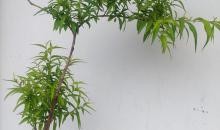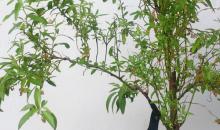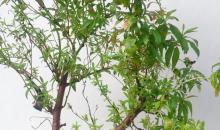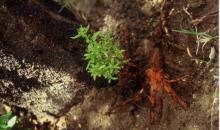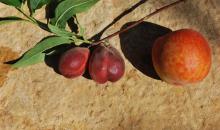'Candidatus Phytoplasma phoenicium'(PHYPPH)
Photos
For publication in journals, books or magazines, permission should be obtained from the original photographers with a copy to EPPO.
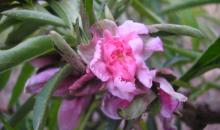
Flower deformation in nectarine
Courtesy: Piero A. Bianco (Univ. of Milan) and Marina Molino Lova (AVSI-Lebanon)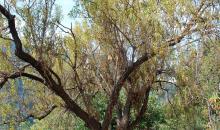
Almond witches' broom symptoms in August
Courtesy: Piero A. Bianco (Univ. of Milan) and Marina Molino Lova (AVSI-Lebanon)
Diseased and healthy almond sprouts
Courtesy: Piero A. Bianco (Univ. of Milan) and Marina Molino Lova (AVSI-Lebanon)
Witches' broom on almond
Courtesy: Piero A. Bianco (Univ. of Milan) and Marina Molino Lova (AVSI-Lebanon)
Early flowering in nectarine (tree in the middle of the picture)
Courtesy: Piero A. Bianco (Univ. of Milan) and Marina Molino Lova (AVSI-Lebanon)
Panoramic view of a dying almond orchard (Akkar, Northern Lebanon)
Courtesy: Bianco Piero Attilio - Università degli Studi di Milano (IT)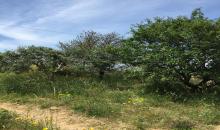
Witche's broom symptoms (symptomatic tree in the middle)
Courtesy: Bianco Piero Attilio - Università degli Studi di Milano (IT)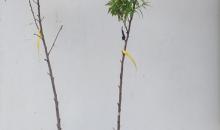
Nectarine seedlings: healthy (left) and infected (right)
Courtesy: Vicken Aknadibossian and Yusuf Abou Jawdah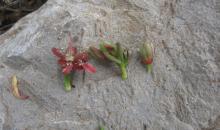
Phyllody on a peach tree affected by 'Candidatus Phytoplasma phoenicium'
Courtesy: Elia Choueiri, Lebanese Agricultural Research Institute (LB)
Healthy (left) and infected (right) almond tree branches with fruit.
Courtesy: Elia Choueiri, Lebanese Agricultural Research Institute (LB)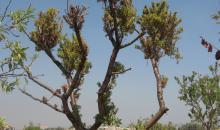
Exacerbated symptoms of witches' broom when trees have been heavily pruned.
Courtesy: Elia Choueiri, Lebanese Agricultural Research Institute (LB)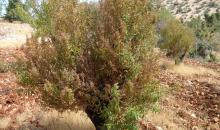
General decline on almond tree due to 'Candidatus Phytoplasma phoenicium'
Courtesy: Elia Choueiri, Lebanese Agricultural Research Institute (LB)
Witches’ broom on wild or spontaneous almond seedling.
Courtesy: Elia Choueiri, Lebanese Agricultural Research Institute (LB)
Proliferation of slender shoots of an almond tree infected by 'Candidatus Phytoplasma phoenicium'
Courtesy: Elia Choueiri, Lebanese Agricultural Research Institute (LB)
